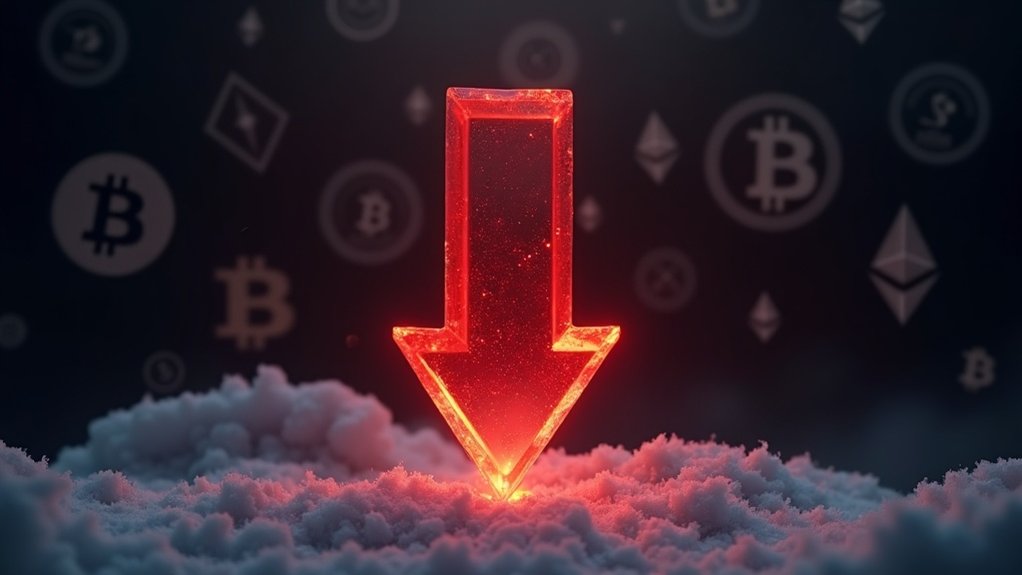Ethereum officially launched on July 30, 2015, with its “Frontier” release. Vitalik Buterin first published the whitepaper in 2013, followed by a Bitcoin Conference announcement in 2014. The presale raised an impressive $18.3 million in Bitcoin. After the “Olympic” testing phase, the Genesis block was mined with 5 ETH block rewards. Initially trading at $0.75, Ethereum faced early challenges including the infamous DAO hack that split the community. The journey from concept to crucial cryptocurrency wasn’t exactly smooth sailing.
Four key phases marked Ethereum’s journey from concept to cryptocurrency powerhouse.
It all started with Vitalik Buterin’s whitepaper in November 2013. Just a big-brained idea then. By January 2014, Buterin was standing at the North American Bitcoin Conference, announcing his creation to the world. The presale followed months later, raising a cool $18.3 million in Bitcoin. Not bad for something that didn’t even exist yet.
Testing came next. The “Olympic” network launched in May 2015, fundamentally Ethereum’s dress rehearsal. Developers poked and prodded, hunting for weaknesses. The reward? 2,500 ETH tokens. A decent payday, considering what came next. The platform utilized distributed ledger technology to ensure transparent and tamper-resistant transactions across the network.
Before going live, Ethereum needed Olympic—where developers stress-tested the network and earned serious ETH for finding flaws.
July 30, 2015. Mark that date. Ethereum officially launched with “Frontier,” the first public release. The genesis block contained 8,893 transactions with a block reward of 5 ETH. Nobody knew what Ether was worth back then. Trading opened around $0.75 per token. Laughable compared to today’s prices.
Early adoption wasn’t exactly explosive. The first transaction didn’t happen until August 7th. DEVCON-0 gathered the true believers to discuss security and scaling. Meanwhile, the DEVgrant program funded promising projects in the ecosystem.
Then came the growing pains. March 2016 brought the Homestead upgrade, improving stability. This was Ethereum’s first major network upgrade. Things were looking up. ETH crossed $10 for the first time.
And then disaster struck. The DAO hack in June 2016 led to the theft of 3.6 million ETH. A fortune, stolen. The community faced an impossible choice: let the hacker win or abandon blockchain immutability.
They chose intervention. The hard fork split Ethereum, creating Ethereum Classic for the purists. The main chain recovered, though. This contentious decision highlighted the tensions among leadership within the Ethereum community regarding blockchain principles.
Frequently Asked Questions
Who Founded Ethereum?
Ethereum was founded by Essentialik Buterin, who published its white paper in 2013 at just 19 years old. Impressive kid.
The “First 5” founders included Buterin, Mihai Alisie, Anthony Di Iorio, Amir Chetrit, and Charles Hoskinson. Later, Gavin Wood, Jeffrey Wilcke, and Joseph Lubin joined the founding team.
Each brought different skills—programming, economics, legal expertise. Together, they crowdfunded $18 million in 2014 and officially launched the network in July 2015.
What Programming Language Is Used for Ethereum Smart Contracts?
Solidity is the main programming language for Ethereum smart contracts. No contest there. Developed specifically for the Ethereum Virtual Machine, it borrows syntax from JavaScript, C++, and Python—making it somewhat familiar to developers.
Vyper serves as the distant second choice, offering a more Pythonic approach with fewer bells and whistles. It deliberately strips away complex features like inheritance and modifiers. Security-focused, you know?
Other languages exist too, but they’re barely on the radar.
How Does Ethereum Mining Work?
Ethereum mining uses Proof-of-Work consensus. Miners solve cryptographic puzzles by finding a valid nonce through brute force calculations.
Succeed and you earn Ether rewards. Pretty simple, right? Wrong. It’s computationally intensive, requiring specialized GPU hardware running software like PhoenixMiner.
Most miners join pools to increase their chances. The whole system adjusts difficulty automatically to maintain block times.
Soon to be extinct though – Ethereum’s shifting to Proof-of-Stake, making all that expensive mining gear obsolete.
What Was the Initial Price of Ether?
Ethereum’s initial price was a measly $0.74 when it launched on July 30, 2015. Talk about humble beginnings.
Upon exchange listing on Kraken (August 7, 2015), it briefly hit $2.77 before plummeting to $0.68 as early investors cashed out. Classic crypto volatility.
The price mostly hovered below $2 throughout 2015, occasionally reaching $1.80. By early 2016, ETH finally broke into double digits, hitting $10.03 on March 4. Not bad for internet money.
How Many Ethereum Coins Will Ever Exist?
Unlike Bitcoin’s 21 million cap, Ethereum has no maximum supply limit. Period.
It’s designed with a flexible issuance model. Initially minting roughly 18 million ETH annually under Proof of Work, Ethereum now issues only about 0.5-1 million yearly since switching to Proof of Stake.
EIP-1559’s burning mechanism sometimes creates temporary deflationary periods, destroying millions of ETH.
Total supply? Currently around 120-122 million ETH.
Future amount? Nobody knows. That’s kinda the point.









